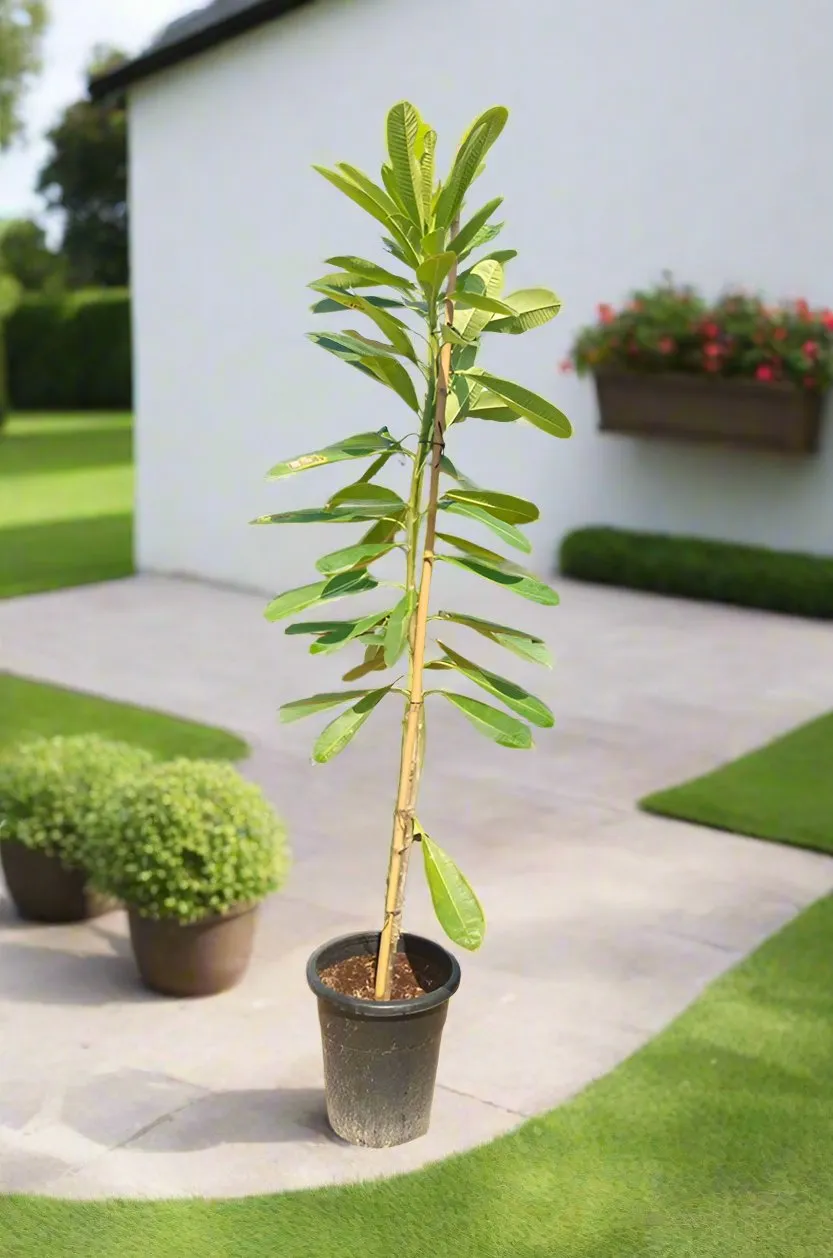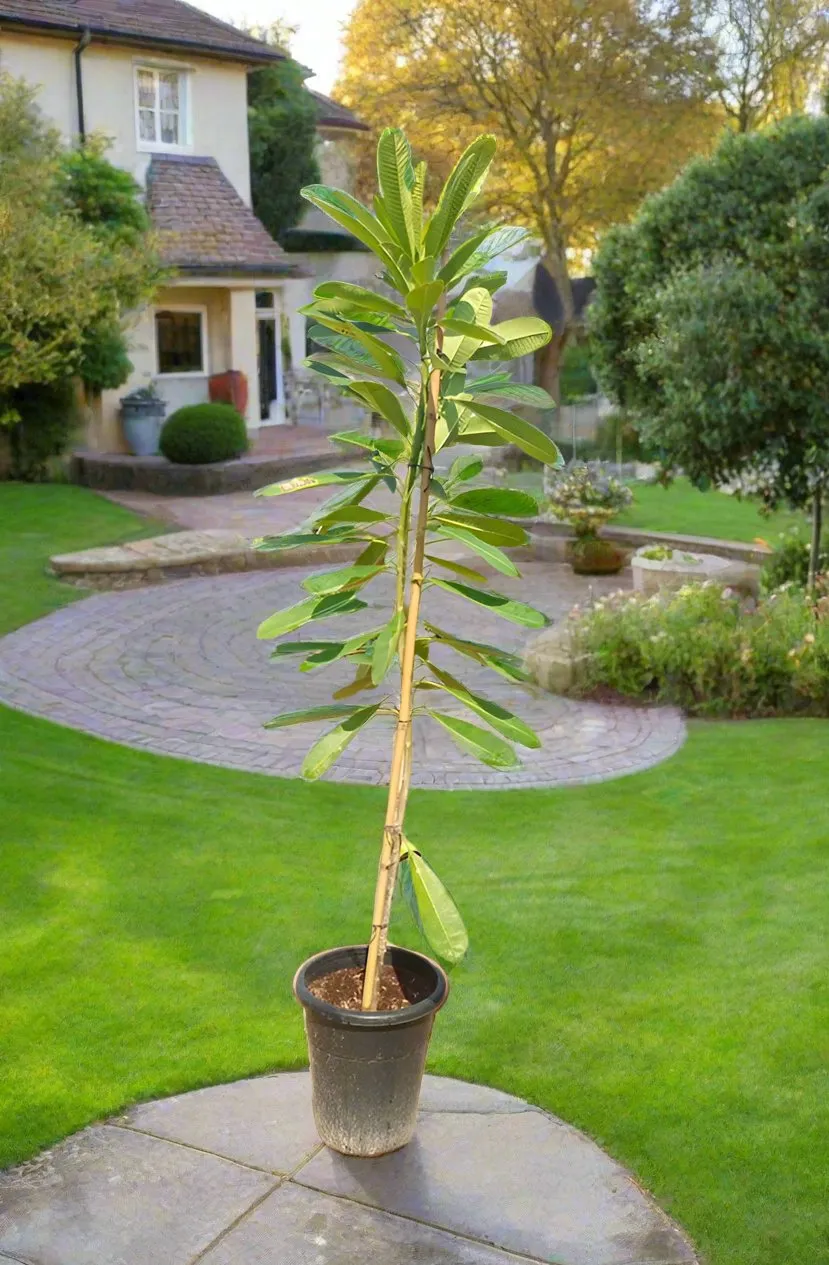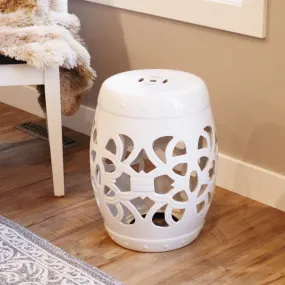Plumeria Obtusa (Frangipani), 10LP, 0.8-1.0M (Overall Height)
Plumeria obtusa, commonly known as Singapore Plumeria, Frangipani, or White Frangipani, is a tropical tree native to the Caribbean, but it is also widely grown in tropical and subtropical regions around the world for its beautiful, fragrant flowers. It is a member of the Apocynaceae family and is highly valued as an ornamental plant.
Key Features:
Growth Habit: Plumeria obtusa is a small to medium-sized tree that can grow up to 5-10 meters (16-33 feet) tall in ideal outdoor conditions. It has a spreading growth habit with a thick, knobby trunk and branches that tend to spread out horizontally.
Leaves: The leaves are glossy, dark green, and leathery with an obovate (rounded at the top) shape. They are typically evergreen in tropical climates but may shed leaves during the dry season in less tropical areas.
Flowers: Plumeria obtusa is known for its large, fragrant, white flowers with a yellow center. The flowers typically have five rounded petals and a waxy texture. The fragrance is sweet and strong, especially in the evening, which attracts pollinators like moths.
Fragrance: One of the plant’s most notable features is its intense fragrance, which is most pronounced at night.
Growing Conditions:
Light: Plumeria obtusa thrives in full sunlight. It requires at least 6-8 hours of direct sunlight per day to encourage flowering. It can tolerate some light shade, but full sun is ideal for optimal growth and bloom.
Soil: The tree prefers well-draining soil. A sandy, loamy, or rocky soil mix that allows for good drainage is best. Plumerias are tolerant of poor soils as long as they do not remain waterlogged.
Watering: Water regularly during the growing season (spring through summer), allowing the soil to dry out between waterings. Reduce watering in the winter when the plant is dormant or semi-dormant, depending on the climate. Overwatering can lead to root rot.
Temperature: Plumeria obtusa thrives in warm climates and prefers temperatures between 18-30°C (65-85°F). It is sensitive to frost, so in cooler climates, it should be grown in containers that can be moved indoors during the winter or protected from cold weather.
Humidity: It prefers high humidity but can tolerate a wide range of humidity levels as long as its other needs are met.
Care and Maintenance:
Pruning: Prune the tree in early spring to control its size and shape and encourage more branching. Pruning also helps remove dead or damaged branches. Plumeria obtusa is known for its thick branches, which can be pruned to maintain a compact shape.
Fertilizing: Use a balanced fertilizer during the growing season to promote healthy foliage and abundant flowers. A fertilizer with higher phosphorus content can be used to enhance flowering.
Repotting: If grown in containers, repot the plant every 2-3 years in fresh soil. Ensure the container has adequate drainage to prevent water from accumulating around the roots.
*Disclaimer: The graphic is just meant to be used as a guide and illustration purposes. Actual product may varies depending on factors like age, height, and temperature, flowering and growing season. The actual product may differ in shape or appearance. Unless the buyer specifically requests a different pot, plants will be sent in plastic pots.
While the material on this page is supplied with the best of intentions, we disclaim any express and implied warranties and representations regarding the correctness, sufficiency, validity, dependability, accessibility, and completeness of any content on the website.

















